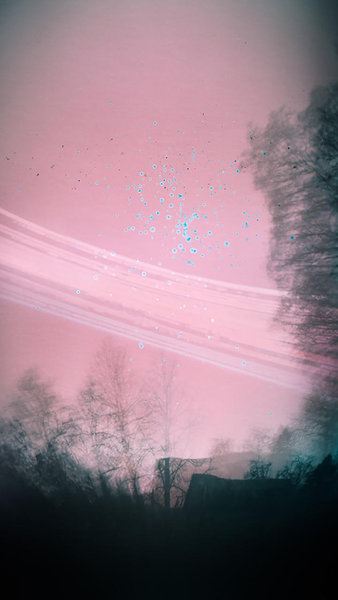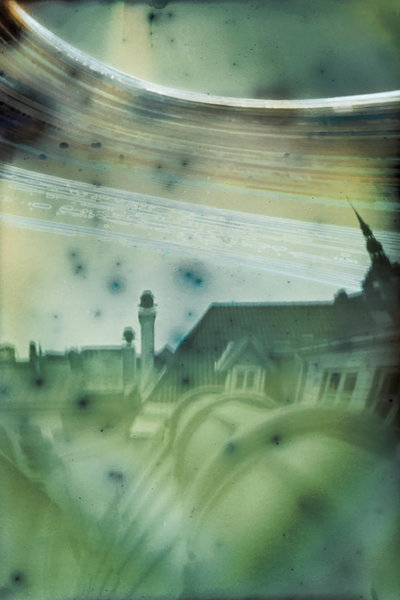/ KRISTIAN SAKS
Solargraphy series SUN IN A TIN
Solargraphy is a photographic process, where the camera is replaced by a tin can, the lens by a pinhole, and the sensor by a light-sensitive photographic paper. The main component of the image is the path of the sun across the sky where each line represents one day and the lack thereof – a cloudy day. Through the combination of exposures stretching to several months and cameras specifically crafted for the purpose, unique works of art are created where time assumes a totally new dimension. Thanks to long exposures the image are burnt onto the photographic paper as a negative image and as a result, the paper's light sensitivity is reduced which makes it possible to later scan the result. However in order to get a digital image, one must sacrifice the negative as the paper hasn't lost all of its sensitivity and it is possible to make only one high-quality scan before the bright light of the scanner ruins the image. Thus light gives us the image and takes it away. The end result of the exposure is greatly influenced by the weather conditions which have unpredictable effects on each exposure. All those factors together create each exposure a dreamlike reflection of the world on a time scale compressed into one moment which is tied into one by the tracks left by the sun.
Solargraphy is a photographic process, where the camera is replaced by a tin can, the lens by a pinhole, and the sensor by a light-sensitive photographic paper. The main component of the image is the path of the sun across the sky where each line represents one day and the lack thereof – a cloudy day. Through the combination of exposures stretching to several months and cameras specifically crafted for the purpose, unique works of art are created where time assumes a totally new dimension. Thanks to long exposures the image are burnt onto the photographic paper as a negative image and as a result, the paper's light sensitivity is reduced which makes it possible to later scan the result. However in order to get a digital image, one must sacrifice the negative as the paper hasn't lost all of its sensitivity and it is possible to make only one high-quality scan before the bright light of the scanner ruins the image. Thus light gives us the image and takes it away. The end result of the exposure is greatly influenced by the weather conditions which have unpredictable effects on each exposure. All those factors together create each exposure a dreamlike reflection of the world on a time scale compressed into one moment which is tied into one by the tracks left by the sun.
In comparison with photography, solargraphy is a relatively new invention that is still in its infancy. The process was conceived by Slawomir Decyki, Pawel Kula, and Diego Lopez Calvin at the end of the 90s and their first solargraphic images saw the light of day in 2000. However, technically solargraphy is rooted in the foundations of photographic methodology, arising basically from pinhole photography and camera obscura. What separates it from traditional pinhole photography, are the extremely long exposure times and chemical-free process.





















